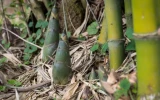Bamboo Farming in North Carolina: How to Get Started
Bamboo farming in North Carolina has gained momentum, with over 2,000 acres dedicated to its cultivation across the state. This sustainable crop offers a variety of uses, from construction materials to culinary products, driving interest among farmers looking for alternative revenue sources.
Bamboo farming in North Carolina is emerging as a viable agricultural venture due to the state's conducive climate and soil conditions. Bamboo can serve various markets, including landscaping, construction, and crafts. NC's climate, characterized by mild winters and long summers, is suitable for many bamboo species.
Bamboo is not just one plant, but a family of grasses, and choosing the right type for the North Carolina environment is crucial. Running bamboo varieties, in particular, need careful management due to their potential to spread, while clumping varieties tend to be more contained.
Summary
- The Bambusa multiplex, known for cold tolerance and dense growth suitable for privacy screens, thrives in North Carolina.
- The Phyllostachys genus, adaptable to the state's climate, includes varieties like the visually striking black bamboo and the rapidly growing and hardy red margin bamboo.
- Examples of cold-hardy bamboos include Phyllostachys nuda and Fargesia rufa, which can endure temperatures as low as -20°F and -10°F, respectively.
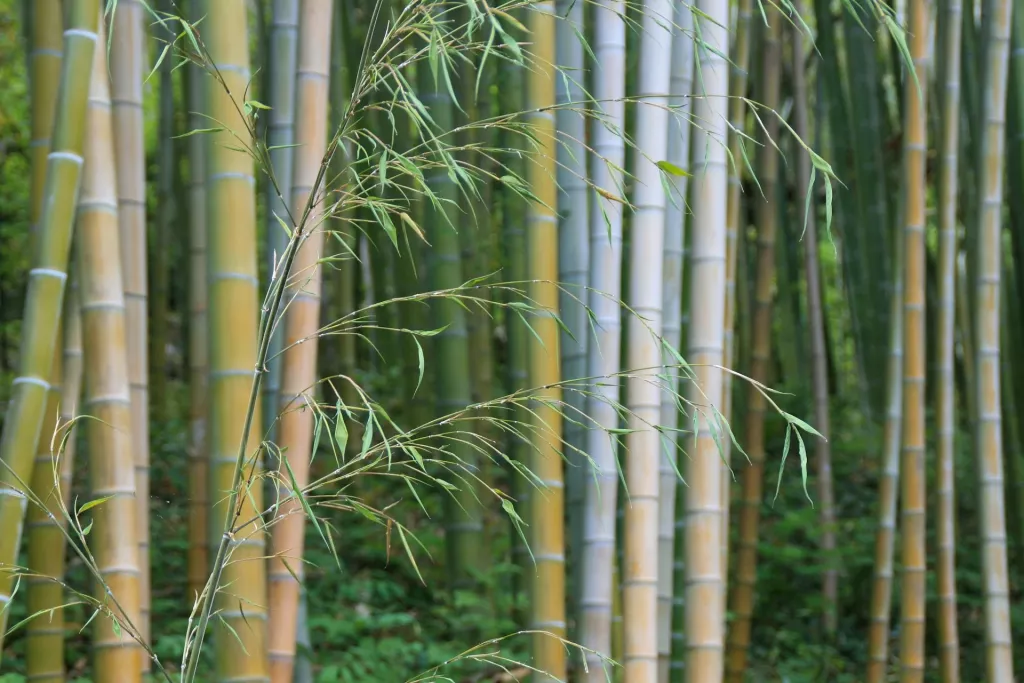
On this page:
What Kind of Bamboo Grows in NC?
In North Carolina, commonly cultivated bamboo species include Phyllostachys aurea (Golden Bamboo), Phyllostachys nigra (Black Bamboo), and Bambusa multiplex (Alphonse Karr Bamboo).
These species are chosen for their adaptability to the climate, growth habits, and uses in landscaping, construction, and crafts. You must manage these species carefully due to their potential invasiveness.
Bambusa
Bambusa, a tropical and subtropical bamboo genus, is represented in the region by species like the Bambusa multiplex. This variety, also known as hedge bamboo, is popular for its tolerance to cold and is often used for privacy screens due to its dense growth.
Phyllostachys
The genus Phyllostachys comprises numerous bamboo species that are adaptable to North Carolina's climate. Among these, the Phyllostachys nigra, or black bamboo, is notable for its distinctively dark-colored culms, while Phyllostachys rubromarginata, or red margin bamboo, is favored for its rapid growth and hardiness.
Clumping bamboo
Clumping bamboo, a non-invasive type, grows in tight clusters, making it a popular choice for controlled landscapes. Varieties include Bambusa multiplex, which thrives in the warmer parts of the state and forms dense clumps suitable for privacy screening.
Running bamboo
In contrast, running bamboo spreads more aggressively through underground rhizomes. While this makes it more challenging to contain, it's also highly efficient at covering large areas quickly. Arundinaria gigantea, a native running bamboo, and the introduced Phyllostachys species are common in North Carolina's bamboo farming.
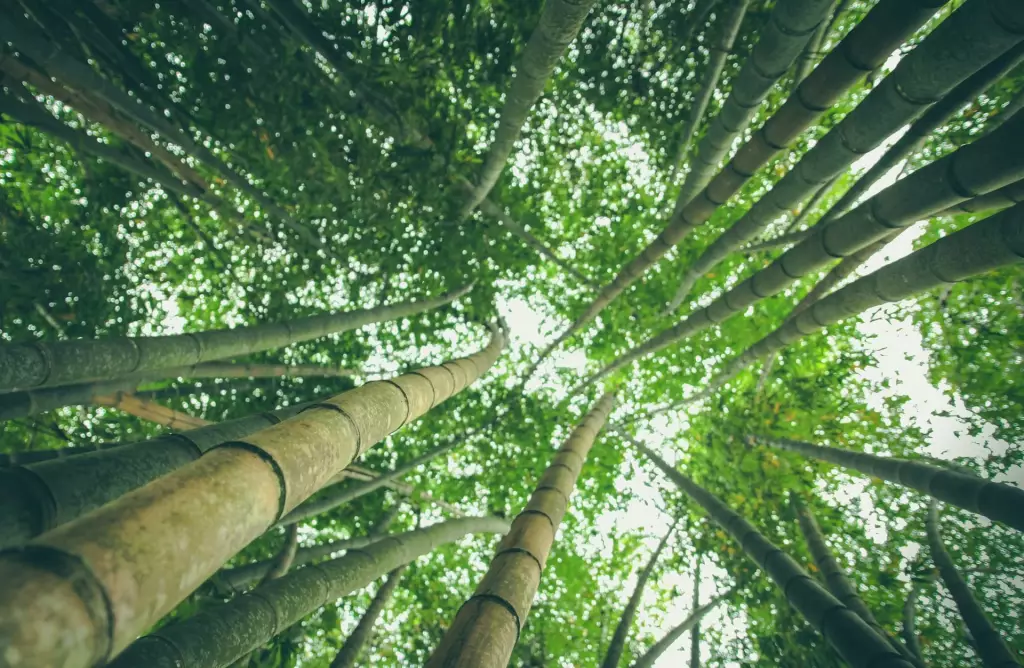
Climate and Soil Requirements
In North Carolina, the success of your bamboo farm hinges on understanding the specific climate and soil needs for optimal growth.
NC's climate is suitable for bamboo
Bamboo thrives in North Carolina's climate due to its warm summers and mild winters. However, selecting the proper bamboo species is crucial if your area experiences more extreme cold. Look for cold-hardy varieties that can withstand lower temperatures.
Ideally, you should choose a bamboo type that can endure the coldest temperatures in your region to ensure successful planting.
Cold-hardy bamboo varieties suitable for North Carolina include Phyllostachys nuda (Nuda Bamboo), which can withstand temperatures down to -20°F, and Fargesia rufa (Dragon Head Bamboo), hardy down to -10°F.
Prepare well-drained soil
Bamboo prefers soil that is rich in organic matter with good drainage. If you have heavy clay soils, it's important to amend them to improve both drainage and aeration. Prepare well-drained soil, ensuring a pH between 5.5 and 6.5.
Bamboo Cultivation Techniques
Planting bamboo in NC
When establishing your bamboo plantation or adding bamboo to your small farm, start by selecting the right species. For example, timber bamboo species are preferable if you aim to produce construction materials.
Plant in spring, spacing according to species' growth habits. The planting process involves:
- Digging a hole twice the size of the root ball.
- Ensuring that the bamboo is planted at the same depth it was growing at in the nursery.
- Amending the soil with organic matter to promote good drainage and aeration, which is crucial for healthy growth.
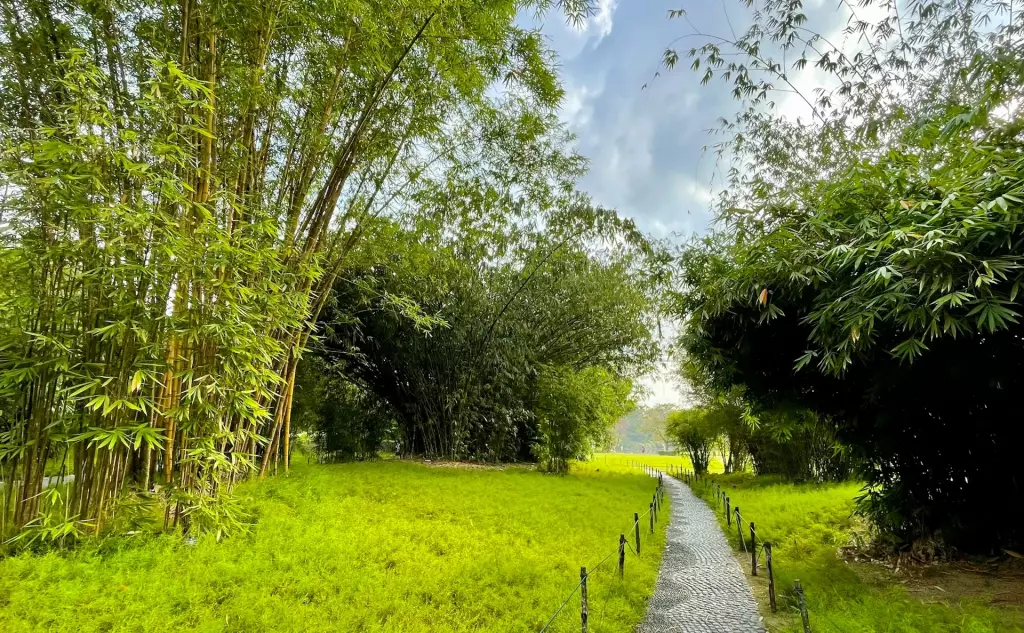
Are you looking to maximize your bamboo yield? Here are some bamboo farming techniques you can practice.
Pruning your bamboo plantation
The objectives are:
- To remove any dead or weak canes to allow more sunlight and air to reach the young shoots.
- To control the height and spread of your bamboo, focus on pruning the lower branches to encourage upward growth.
Pruning also helps in the production of larger bamboo shoots for food if that's your market.
Consider the age of your bamboo
- Young bamboo shoots are generally harvested for food within the first year of growth.
- For timber bamboo, it's best to wait several years until the canes fully harden—typically five to seven years—before harvesting for structural use.
How fast does bamboo grow in NC?
Bamboo in North Carolina can grow rapidly, up to 2–3 feet per day for some species during the peak growing season, making it one of the fastest-growing plants in the world.
Generally, bamboos reach maturity and maximum height within 3 to 5 years, depending on the species and growing conditions. This rapid growth makes bamboo a highly renewable resource.
Sustainability and Environmental Impact
Bamboo is recognized as a renewable resource due to its rapid growth rate and ability to regenerate from its own roots, eliminating the need for replanting. This makes bamboo an eco-friendlier choice compared to many other timber species.
Your bamboo plantation can contribute positively to the environment by absorbing carbon dioxide and producing oxygen. Moreover, bamboo can thrive on degraded lands, adding to its environmental benefits by restoring soil health.
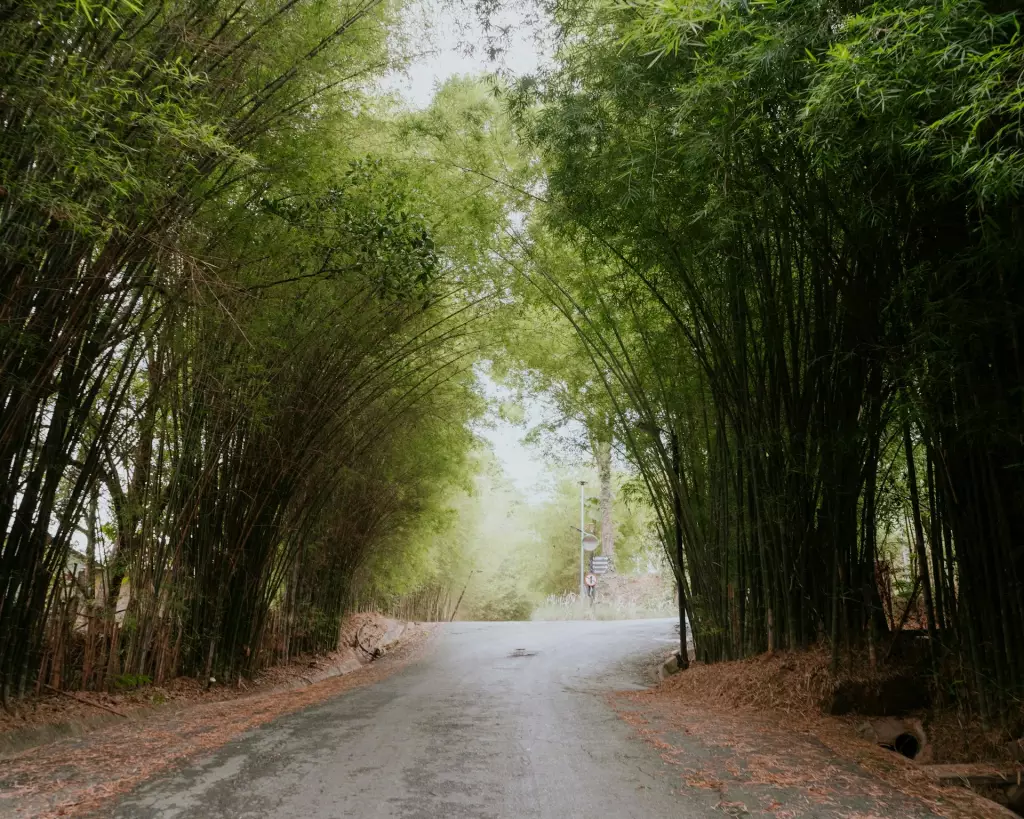
Bamboo products are gaining attention as sustainable alternatives in construction and privacy screens due to bamboo's impressive sturdiness. Using bamboo for these purposes can reduce dependence on traditional hardwoods, which often come from less sustainable forestry practices.
The environmental footprint of bamboo in terms of water usage and pesticides is generally lower compared to other crops as well. In your approach to bamboo farming, consider using eco-friendly practices like efficient water management and natural pest control to minimize your impact further.
While bamboo has considerable environmental benefits, it's essential to manage your plantation well. Without proper control, bamboo can become invasive, threatening local ecosystems. To reduce this risk, you should plan your crop’s layout and containment strategies carefully.
Efficient water management
-
Soil moisture monitoring: Regularly check the soil moisture around your bamboo plants. Bamboo prefers consistent moisture but does not like to be waterlogged. Use a moisture meter or the finger test (stick your finger about 2 inches into the soil; if it's dry, it's time to water).
-
Mulching: Apply a thick layer of organic mulch around the base of your bamboo plants. Mulch helps retain soil moisture, reduces water evaporation, and keeps the soil temperature stable.
-
Drip irrigation: Consider installing a drip irrigation system for your bamboo. Drip irrigation provides slow, consistent moisture directly to the roots, which is more efficient than overhead watering. It reduces water waste and helps prevent fungal diseases by keeping the foliage dry.
-
Watering schedule adjustments: Adjust your watering schedule based on the season. Bamboo needs more water during hot, dry periods and less during cooler, wetter times. Early morning is the best time to water to reduce evaporation and allow moisture to penetrate deeply.
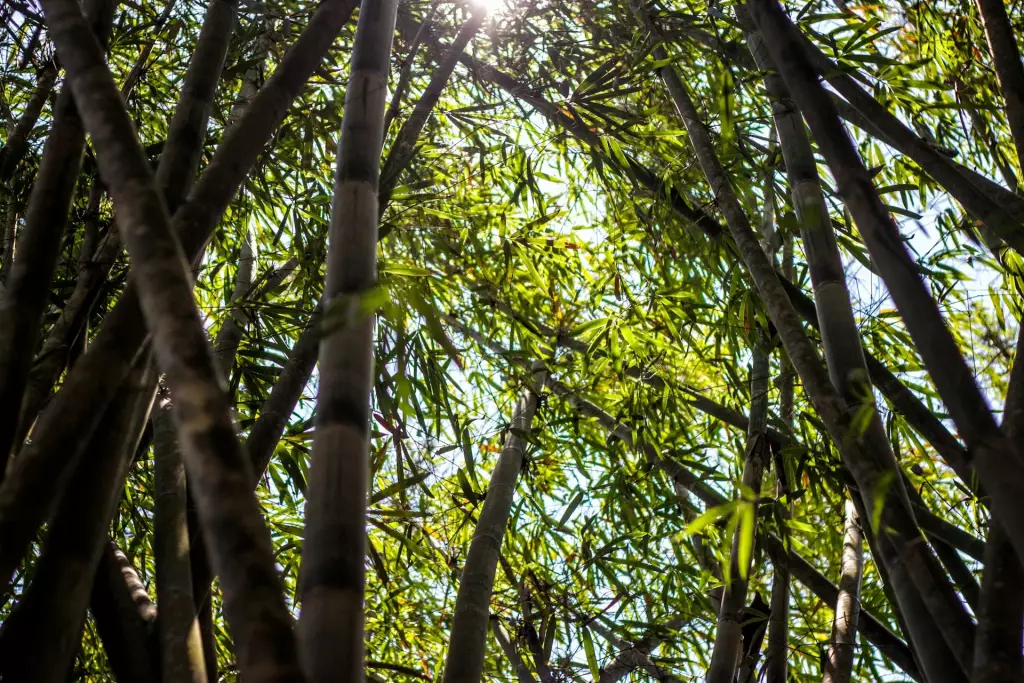
If you're planning to cultivate and sell your bamboo for profit, here's a detailed guide.
Natural pest control for bamboo
-
Physical barriers: Use physical barriers such as garden fabric or nets to protect young bamboo plants from pests. This can be particularly effective against larger pests like deer or rabbits.
-
Beneficial insects: Encourage beneficial insects like ladybugs, lacewings, and predatory beetles that prey on common bamboo pests. Planting a variety of flowering plants nearby can attract these beneficial insects.
-
Neem oil: Neem oil is a natural pesticide that can be effective against a wide range of pests including aphids, mites, and certain types of beetles. It's safe for use around pets and wildlife when used as directed.
-
Companion planting: Certain plants can repel pests naturally and can be planted around your bamboo to protect it. Marigolds, for example, can deter nematodes and other pests.
-
Regular inspection and cleanliness: Regularly inspect your bamboo for signs of pests and disease. Remove any diseased or infested parts promptly. Keep the area around your bamboo clear of debris where pests might hide or breed.
Crop layout for bamboo
-
Selection of species: Choose clumping bamboo varieties for easier control and containment, as these types spread less aggressively than running bamboo varieties. If you prefer running bamboo for its growth habit or appearance, be prepared to implement more stringent containment measures.
-
Buffer zones: Establish buffer zones around your bamboo planting area. These zones can be filled with mowed grass or other easily managed vegetation to help detect and manage any stray shoots.
-
Functional planting: Consider the purpose of your bamboo crop. If it's for privacy screens or windbreaks, plant bamboo in a linear fashion along the area you wish to cover. For ornamental purposes, a cluster or scattered layout may be more appropriate.
-
Access paths: Ensure that your layout includes access paths for maintenance, irrigation, and inspection. Regular access is crucial for managing and containing your bamboo effectively.

Containment strategies
-
Physical barriers: Installing physical root barriers is one of the most effective containment strategies for running bamboo. Bury a high-density polyethylene or metal barrier at least 24-30 inches deep around the perimeter of your bamboo planting area. Overlap the barrier edges to prevent roots from finding their way through gaps.
-
Trenching: For smaller areas or where barriers are not feasible, consider trenching. Dig a trench around the perimeter of the bamboo area and regularly inspect it for escaping rhizomes (roots). Cut and remove any that attempt to cross the trench.
-
Raised beds: Planting bamboo in raised beds can also help contain its spread. Ensure the sides of the beds are sturdy and extend deep enough to prevent rhizomes from escaping underneath.
-
Clumping species: As mentioned, opting for clumping species can significantly reduce the need for aggressive containment strategies. These species naturally grow more compactly and are less likely to invade adjacent areas.
-
Regular maintenance: Regularly monitor and manage your bamboo to prevent it from becoming invasive. This includes cutting back any shoots that stray beyond the desired area, thinning the bamboo to manage its density, and removing unwanted or dead culms (stems).



